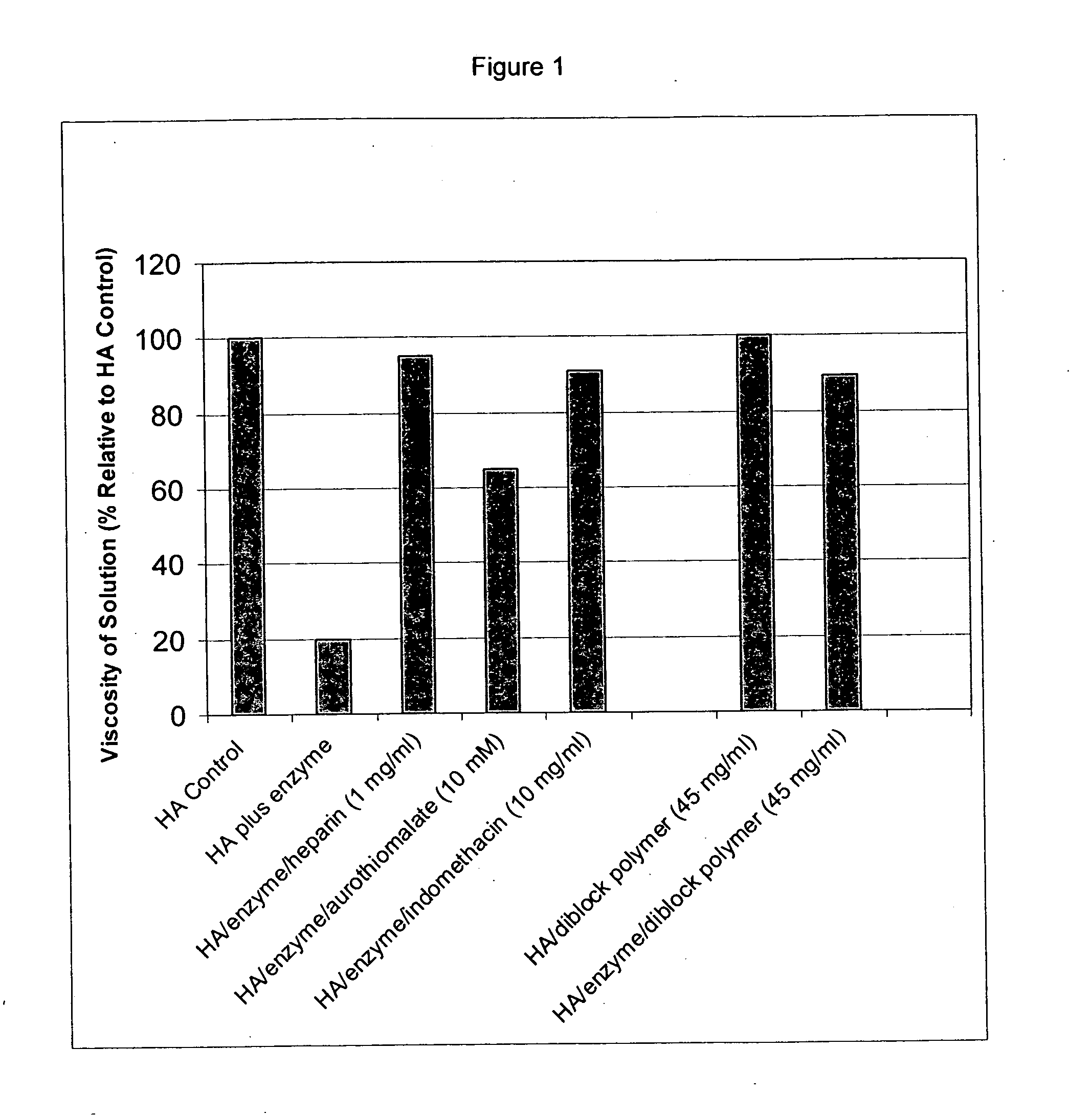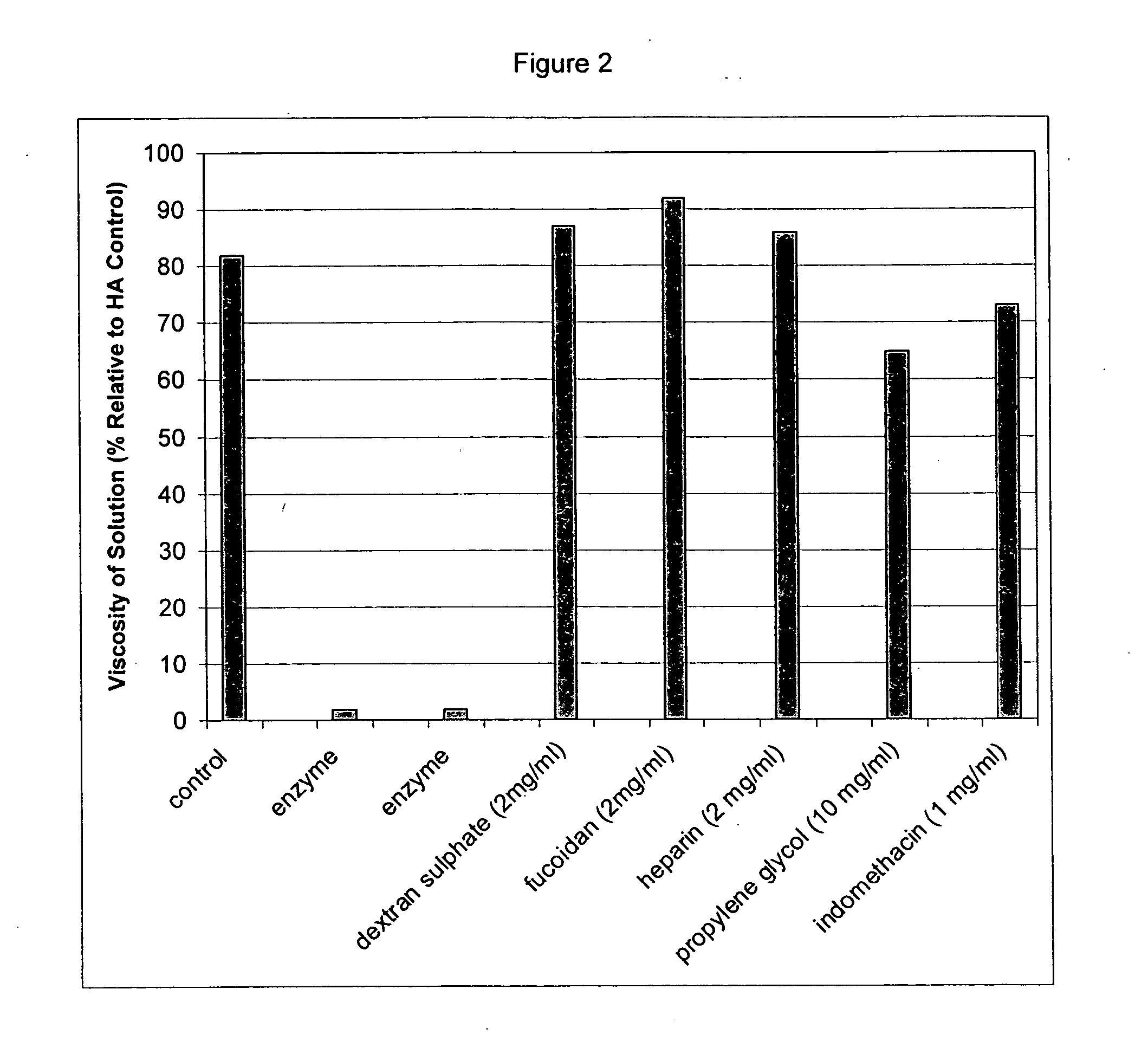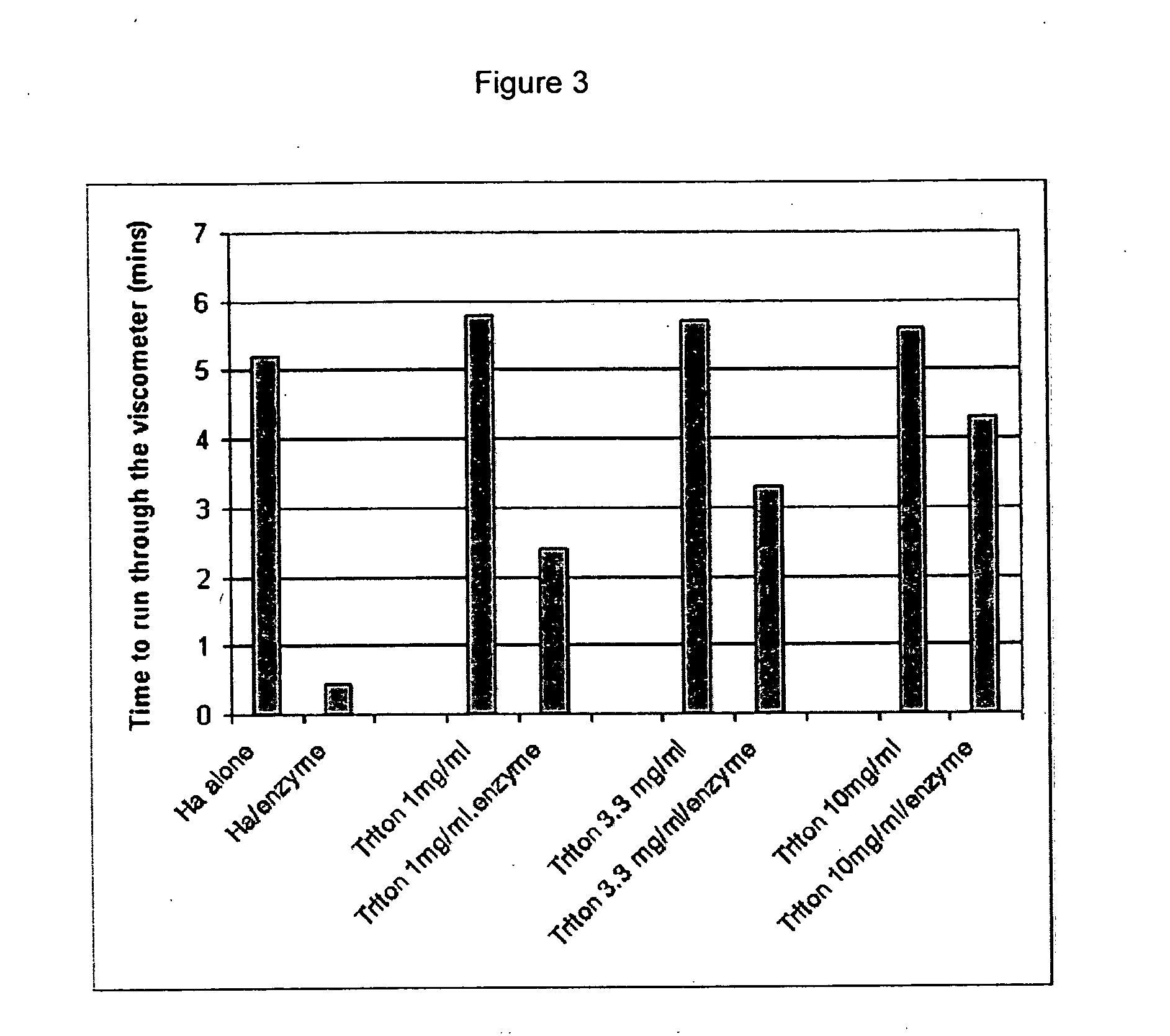Compositions and methods using hyaluronic acid
- Summary
- Abstract
- Description
- Claims
- Application Information
AI Technical Summary
Benefits of technology
Problems solved by technology
Method used
Image
Examples
example 1
Inhibition of Hyaluronic Acid Degradation Using the Hyaluronic Acid Viscometry Assay
[0246] A viscometry assay (Hyaluronic Acid Visometry Assay) was used to determine the effect of various compounds on the degradation of hyaluronic acid (HA) by hyaluronidase (see, e.g., “Rheological Study on Mixtures of Different Molecular Weight Hyaluronates,” Berriaud, N., et al., Int. J. Biol. Macromol. (1994); 16 (3): p. 137-142 and “Determination of Extracellular Matrix Degradation by Free Radicals using Viscosity Measurement of Hyaluronan,” Deguine V., et al., Clinica Chimica Acta (1997); 262(1-2): p. 147-52). The time for the sample to run through the viscometer was proportional to the viscosity of HA in the sample, which, in turn, was proportional to the molecular weight of the HA. As the enzyme (hyaluronidase) breaks down HA, the molecular weight of the polymer is reduced, the viscosity of the solution drops, and the solution runs through the viscometer more rapidly. Accordingly, shorter ru...
example 2
Inhibition of Hyaluronic Acid Degradation
[0248] Viscometry was used to determine the effect of sulphated polysaccharides (dextran sulphate, fucoidan, and heparin), propylene glycol, and indomethacin on the degradation of HA by hyaluronidase using the procedure described in Example 1. The results are provided in Table 2 and FIG. 2. The data indicates that heparin, indomethacin, propylene glycol, dextran sulphate and fucoidan inhibit the action of hyaluronidase, since the viscosity of the hyaluronic acid solution remains higher than that of the enzyme control.
TABLE 2Degradation of HA(% viscosity relativeSampleto control t = 0)HA control82Enzyme control2Enzyme control2Dextran sulphate (2 mg / ml)87Fucoidan (2 mg / ml)92Heparin (2 mg / ml)86Propylene glycol (10 mg / ml)65Indomethacin (1 mg / ml)73
example 3
INHIBITION OF HYALURONIC ACID DEGRADATION BY TRITON X-100
[0249] The method described in Example I was used to analyze the effect of TRITON X-100 on the inhibition of HA degradation by hyaluronidase. The results expressed in terms of time for the sample to run through the viscometer are presented in Table 3 and FIG. 3. The data indicates that TRITON X-100 inhibits the action of hyaluronidase, since the viscosity of the hyaluronic acid solution remains higher than that of the enzyme control.
TABLE 3Time (minutes) for sampleSampleto run through viscometerHA control5.2HA / enzyme0.46TRITON X-100 (1 mg / ml)5.83TRITON X-100 (1 mg / ml) / enzyme2.33TRITON X-100 (3.3 mg) / ml5.6TRITON X-100(3.3 mg / ml) / enzyme3.33TRITON X-100 (10 mg / ml)5.46TRITON X-100 (10 mg / ml) / enzyme4.33
PUM
| Property | Measurement | Unit |
|---|---|---|
| Volume | aaaaa | aaaaa |
| Volume | aaaaa | aaaaa |
| Molar density | aaaaa | aaaaa |
Abstract
Description
Claims
Application Information
 Login to View More
Login to View More - R&D
- Intellectual Property
- Life Sciences
- Materials
- Tech Scout
- Unparalleled Data Quality
- Higher Quality Content
- 60% Fewer Hallucinations
Browse by: Latest US Patents, China's latest patents, Technical Efficacy Thesaurus, Application Domain, Technology Topic, Popular Technical Reports.
© 2025 PatSnap. All rights reserved.Legal|Privacy policy|Modern Slavery Act Transparency Statement|Sitemap|About US| Contact US: help@patsnap.com



